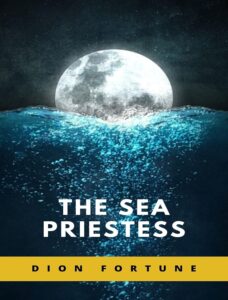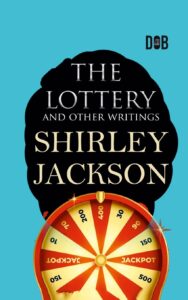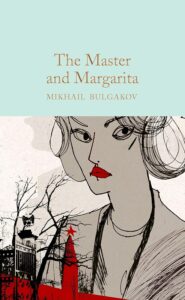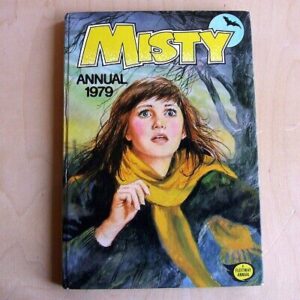Decades: Compiling the Ultimate Library with Syd Moore
Welcome to a very special Decades selection. Special because the fabulous Syd Moore has brought some wonderfully wyrd books into the Decades Library but also because this week sees me complete my own fifty year span. It’s a landmark birthday week for me and I love that I will get to share more great book recommendations which I hope will swell your TBR to a dangerous level.
As ever I will do a very quick recap to explain my Ultimate Library and why I refer to it as my Decades Library. Back in January 2021 I was contemplating the immense challenge a librarian would face if they were given a brand new library and were tasked with filling all the empty shelves with the very best books. Which titles would the librarian choose? Which titles would I choose? Would they look to add classic titles or seek out newer books?
I realised that I could not begin to take on a task of that magnitude as my own reading preferences would be too narrow. So I decided to ask other booklovers which books they would add to the Ultimate Library. Over the last three years I have added several hundred books to the Library shelves, all selected by my guests (authors, publishers, bloggers and journalists) and I do believe we are curating an amazing selection of books.
Why do I call my Ultimate Library the Decades Library? Each time I ask someone to select books to be added to the Library shelves I ask them to follow two rules:
1 – You Can Select ANY five Books
2 – You May Only Select One Book Per Decade From Five Consecutive Decades (a fifty year publication span).
My Decades Library.
Okay, it is time to take my customary step back and pass control over to my guest curator…
 Syd Moore here, reporting for action. If you aren’t familiar with my work, Starburst Magazine has described my writing as ‘Dennis Wheatley meets Caitlin Moran.’ Most of my novels and short stories are indeed flavoured with the occult, witch trials, secret or forgotten histories, and often populated with firmly feminist characters.
Syd Moore here, reporting for action. If you aren’t familiar with my work, Starburst Magazine has described my writing as ‘Dennis Wheatley meets Caitlin Moran.’ Most of my novels and short stories are indeed flavoured with the occult, witch trials, secret or forgotten histories, and often populated with firmly feminist characters.
The Grand Illusion, my latest offering, focuses on how the British Secret Service exploited the Nazi’s obsession with the occult. It proved quite a challenge to create an independent female protagonist, full of feist, in the world of 1940 before the f-word had even been invented. However, as I researched, I discovered that many young women called into the war effort actually found the work liberating. So when the Security Service approach Daphne Devine and her boss, The Grand Mystique, they are spirited away from treading the boards of London’s theatreland and sent off for training, where they must use their resources and skills in illusion to pull off an operation created to repel the German invasion of the British Isles. As a result, Daphne, like most of us faced with a huge challenge, grows in confidence and self-knowledge into a formidable force of her own.
As with my other novels this is also based on what is thought to be a real event.
With my Dennis Wheatley and Caitlin Moran tendencies I don’t think anyone will be surprised by my eclectic choice of books for Decades.
I hope you enjoy them.
DECADES
The Sea Priestess by Dione Fortune (1938)
Dione Fortune, aka Violet Mary Firth, was an occultist and writer who founded the ‘Fraternity of the Inner Light’. This was an esoteric society born out of the more famous Hermetic Order of the Golden Dawn whose members included W.B. Yeats, Aleister Crowley, Sir Arthur Conan Doyle and Algernon Blackwood, amongst other luminaries.
The Sea Priestess is very much a novel that demonstrates Dione Fortune’s beliefs. It features the disillusioned and unfulfilled Wilfred Maxwell, who meets Vivien Le Fay Morgan, a magical practitioner of an esoteric sect. Vivien introduces Wilfred to ancient rituals and esoteric practices connected to the sea and lunar magic, all of which produce a powerful spiritual awakening. The novel had a huge impact on me when I read it in my twenties, blending the esoteric with excellent storytelling. Sadly, I’m not sure it’s the kind of thing that would be published today. The eagle eyed can spot Fortune come to life once more in a brief cameo in The Grand Illusion.
‘The Lottery’ by Shirley Jackson (1948)
Not a novel but a short story. Set in a small and isolated village where an annual ritual takes place, ‘The Lottery’ is an early piece of folk horror. Succinct but bone chilling, it explores themes of pagan tradition, irrationalism versus thought and logic, and the human propensity for violence. Yep, its dark. The story is well known and in fact inspired one of my own in The Twelve Even Stranger Days of Christmas. Recently there has been a revival of interest in Jackson’s work probably due to the biopic ‘Shirley’, released in 2020, which starred Elisabeth Moss in the title role. It is definitely worth watching if you enjoy the wyrd and spooky.
The Daughter of Time by Joesphine Tey (1951)
Alan Grant, a police officer, is laid up in hospital with a broken leg. When his friend, Marta, visits him with a series of pictures and postcards one of them sparks an intense curiosity in Grant. It is a portrait of the much maligned king, Richard III, who has historically been cast as the villain in the murder of the princes in the tower. Grant decides to investigate their mysterious disappearance like a crime and comes to some startling conclusions.
I read this book at the age of thirteen and it really stuck in my mind. To my surprise the historical research was not boring. I enjoyed the way Grant delved into the past with help from those around him and how readers learnt about the myths and legends that were constructed around Richard after his death. It was a lesson in how History’s winners tend to shape the past and shed light on methods with which one might unpick the narratives they spin. For these, as I have discovered in my own research, tell only half the story.
The Master and Margarita by Mikhail Bulgakov (1966)
Bulgakov’s magnum opus was written sometime between 1928 and 1940. It is one of the most imaginative novels I have ever come across and features the Devil descending (or ascending according to your own belief systems) onto Bulgakov’s contemporary Moscow. He is accompanied by a huge talking cat called Behemoth, a vampire, a strange valet, and an assassin, all of whom misbehave with hilarious and absurd results. The subplots are many: one weaves through the love story of the ‘Master’ of the title, a writer, and his lover, Margarita. Another, full of pathos, features a tormented Pontius Pilot labouring over the verdict passed on a young Jewish preacher. It is mad, funny, joyous and horrifying. The language and imagery are truly exceptional. But, as the book satirised Russian society at the time, it was not published until the 1960s and only serialised. Even then it was censored.
Bulgakov was heavily criticised for his works during his lifetime and sadly died in 1940 without seeing the global success that his novel would become. Today his book is thought to be one of the best novels of the Twentieth Century.
I have taught it to M.A. students who have mixed reactions – some of them love it, but others find it hard work. Personally, I think it’s a masterpiece which explores the enduring themes of good and evil, corruption and the triumph of love in difficult times.
Misty Annual 1979
Misty was a comic that came out in the 70s and 80s. It was a kind of Tales of the Unexpected for young and teenage girls, though boys loved it too. I used to wait avidly behind the front door when I knew it was about to be delivered and would devour the publication each week, meeting one of my similarly obsessed friends to discuss the ins and outs of the various storylines. At the time, these tales filled both of us with a sense of mystery and awe, ranging across subjects that would now be categorised as ‘horror’. Psychokinesis, clairvoyancy, ghosts, witches, curses, werewolves, karma, time slips, precognition and legends of old – all of these unsuitable topics for children filled its deliciously ghastly pages. I’m surprised that my parents allowed me to read it!
A couple of years ago, when I moved house, I came across my Misty 1980 annual and found a piece on the Witchfinder General. I had no memory of reading it but clearly must have done as there was Marmite smeared on the bottom of a page which contained a tiny fingerprint similar to that on my right index finger! In 2012 my book Witch Hunt was published, all about the same despicable man. Though I don’t think I had ever been consciously aware of it, the seeds of my career and the style of my books had clearly been planted back, whilst I sat on the doormat and flicked through its splendidly dark (and Marmite stained) pages.
After reading Syd’s selections I reaslied what an important part Annuals played in my childhood reading. I would always get an Annual for my Christmas (usually The Beano or Whizzer and Chips) but for the rest of the year I would scour jumble sales or second hand bookshops trying to find old annuals from the 70s and 80s…I would read them over and over again. I am delighted Syd has brought Misty into the Decades Library and all five selections are brilliant additions to the Decades Library. Syd, thank you!
DECADES WILL RETURN





